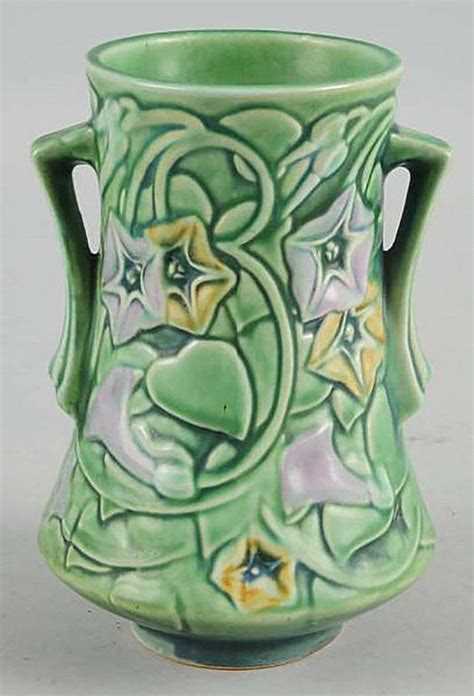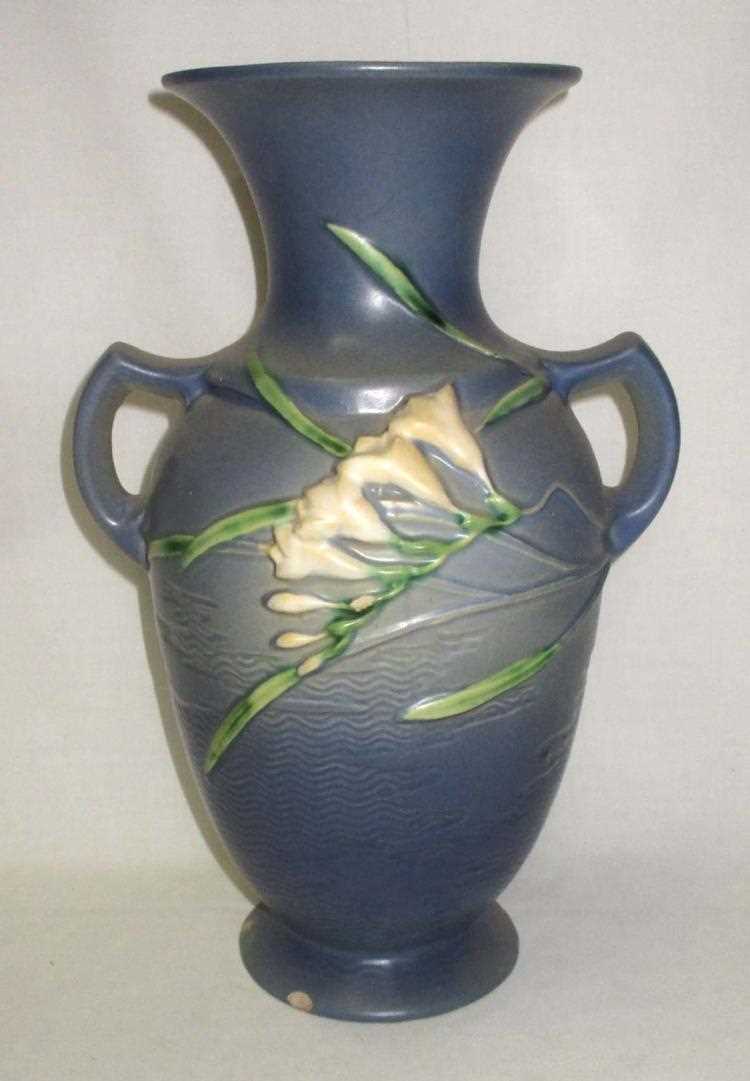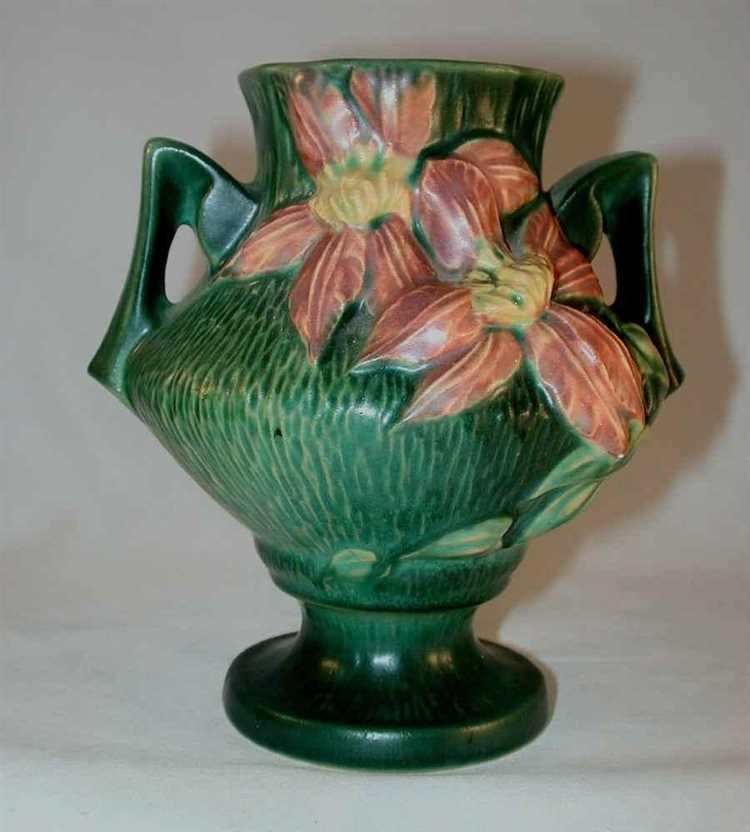Roseville Pottery is often considered one of the most iconic American ceramic art forms. With its unique designs and vibrant colors, it has captured the hearts of collectors for decades. However, what exactly makes Roseville Pottery so expensive?
Firstly, the scarcity of Roseville pieces plays a significant role in their high price tags. Many of the designs produced by the Roseville Pottery Company were only in production for a short period of time, or in limited quantities. This limited availability makes the pieces harder to find, increasing their value to collectors.
Secondly, the quality and craftsmanship of Roseville Pottery contribute to its high price. Each piece was handmade and hand-painted, with meticulous attention to detail. The intricate patterns and vibrant colors are a testament to the skill of the artisans who created them. This level of craftsmanship adds value to the pottery, making it more desirable among collectors.
Factors Influencing Roseville Pottery Prices
Roseville Pottery is known for its collectability and high prices in the antique market. Several factors contribute to the prices of Roseville Pottery, including:
- Condition: The condition of the pottery plays a significant role in determining its price. Pieces that are in excellent condition with no chips, cracks, or repairs will command higher prices.
- Rarity: The rarity of a particular Roseville Pottery design can also greatly influence its price. Pieces that were produced in limited quantities or have unique features are more desirable and, therefore, more expensive.
- Design: The design of the pottery can heavily impact its value. Certain patterns or motifs that are highly sought after by collectors will fetch higher prices. The popularity and demand for a specific design often drive up its price.
- Age: The age of Roseville Pottery can affect its price. Older pieces, especially those from the early 20th century, are generally more valuable than newer ones. This is because they are considered more collectible and have historical significance.
- Provenance: The provenance or history of a piece of Roseville Pottery can also influence its price. Pieces with a documented history or connections to famous collectors or events may have higher value due to their unique background.
- Size: The size of the pottery can impact its price. Larger pieces often have a higher value than smaller ones due to their visual impact and the amount of materials used in their creation.
When determining the price of Roseville Pottery, it is essential to consider a combination of these factors. Collectors and enthusiasts will often pay a premium for pieces that possess desirable attributes such as exceptional condition, rarity, and sought-after designs. Understanding these factors can help both buyers and sellers make informed decisions in the Roseville Pottery market.
Rarity and Desirability
One of the main factors that contributes to the high price of Roseville pottery is its rarity. Roseville pottery was produced between 1890 and 1954, with the majority of pieces being made in the early 20th century. Over time, many pieces of Roseville pottery have been lost, damaged, or destroyed, making the remaining pieces more valuable due to their scarcity.
Another reason why Roseville pottery is highly desirable is its unique and beautiful designs. The pottery was known for its intricate details, vibrant colors, and artistic craftsmanship. Each piece of Roseville pottery was hand-painted, making them truly one-of-a-kind. The combination of the rarity and beauty of Roseville pottery adds to its desirability among collectors and enthusiasts.
Collectors also appreciate the historical significance of Roseville pottery. The pottery reflects the Art Deco and Art Nouveau movement that was prevalent during its production period. Many collectors are drawn to Roseville pottery as a way to own a piece of history and to appreciate its cultural and artistic value.
The condition of the pottery also plays a role in its desirability and price. Collectors prefer pieces that are in excellent condition, free from chips, cracks, or repairs. Pieces with original labels or markings also hold a higher value. These factors contribute to the rarity and scarcity of Roseville pottery in good condition, further driving up its price in the market.
- Rarity of Roseville pottery
- Unique and beautiful designs
- Historical significance
- Condition
In conclusion, the rarity, desirability, historical significance, and condition of Roseville pottery are the key factors that make it pricy. Collectors and enthusiasts value these aspects, making Roseville pottery a sought-after collectible in the market.
Historical Significance
Roseville Pottery holds a strong historical significance in the world of art and pottery. Founded in 1890 in Roseville, Ohio, the pottery company soon gained popularity for its unique and innovative designs.
During its prime, Roseville Pottery became renowned for its intricate hand-painted patterns and distinctive shapes. The company’s artistry and craftsmanship reflected the ongoing artistic movements of the time, such as Art Nouveau and Arts and Crafts.
Roseville Pottery’s designs also captured the essence of American culture, often incorporating elements from nature, such as flowers, animals, and landscapes. These motifs resonated with the American public and contributed to the popularity of Roseville Pottery during the early 20th century.
The company’s success continued until the Great Depression in the 1930s, which led to its eventual closure in 1954. However, the legacy of Roseville Pottery lives on through its collectible pieces, which are highly sought after by art enthusiasts, historians, and collectors.
Today, Roseville Pottery is recognized as an important part of American art history, symbolizing the creativity and craftsmanship of the early 20th century. Its pieces not only serve as decorative items but also as artifacts that represent a significant era in the evolution of pottery and design.
Condition and Authenticity
When it comes to evaluating the value of a piece of Roseville Pottery, two important factors to consider are the condition and authenticity of the item.
The condition of the pottery refers to its physical state, including any damage, repairs, or restoration that may have been done. Collectors typically prefer pieces that are in excellent condition with no visible defects. This includes avoiding any chips, cracks, or repairs that may have been made to the pottery. Pieces that have suffered damage are generally less valuable compared to those that are in pristine condition.
Authenticity is another crucial factor when it comes to determining the value of Roseville Pottery. Due to its popularity and collectability, there have been cases of fake or counterfeit Roseville Pottery in circulation. It is important for collectors to be able to distinguish between genuine Roseville Pottery and imitations.
There are several ways to determine the authenticity of Roseville Pottery. One method is to study the pottery marks or signatures on the piece. Genuine Roseville Pottery typically has distinct and legible marks, while counterfeit pieces may have blurry or poorly executed marks.
Another important aspect of determining authenticity is to be familiar with the different styles and designs that Roseville Pottery produced throughout its history. Each design has unique characteristics and details that can help collectors verify the authenticity of a piece.
Collectors should also be cautious of pieces that may have been altered or manipulated in some way. Some sellers may attempt to enhance the value of a piece by adding or removing certain elements. It is important to thoroughly inspect the pottery for any signs of alteration.
Overall, the condition and authenticity of Roseville Pottery are key factors in determining its value. Collectors should carefully examine the physical state of a piece and verify its authenticity through marks, designs, and any other relevant information to ensure they are investing in a genuine and valuable piece of Roseville Pottery.
Artist’s Reputation
The reputation of the artist plays a significant role in determining the price of Roseville Pottery. The pottery produced by highly regarded and sought-after artists is often more valuable and expensive.
Artists who have a long and successful career in creating exceptional Roseville Pottery pieces tend to have a higher demand among collectors. These artists have established a reputation for their craftsmanship, creativity, and attention to detail.
A well-known artist’s reputation is often built on their consistent production of high-quality pottery and their ability to create unique and innovative designs. Collectors are willing to pay a premium for pieces created by such artists because they are confident in the quality and value of the artwork.
Additionally, artists who have received recognition and awards for their work are highly regarded in the Roseville Pottery community. These accolades further contribute to their reputation and increase the desirability and price of their pieces.
Collectors often value the individual style and artistic expression of specific artists. The uniqueness and distinctiveness of an artist’s work can make their pottery more valuable as collectors seek to add these exceptional pieces to their collection.
Furthermore, the scarcity of pottery created by renowned artists can also impact its price. If an artist had a short-lived career or produced a limited number of pieces, the demand for their pottery may exceed the available supply, driving up the price.
In conclusion, the artist’s reputation is an important factor in determining the price of Roseville Pottery. The craftsmanship, creativity, recognition, and scarcity associated with a particular artist can greatly influence the value and desirability of their artwork among collectors.
Pattern and Design
The pattern and design of a piece of Roseville Pottery is one of the key factors that contribute to its price.
Roseville Pottery is known for its wide range of intricate and unique patterns, which were carefully handcrafted by skilled artisans. These patterns often featured floral motifs, such as roses, daisies, and poppies, as well as geometric and abstract designs.
The more complex and detailed the pattern, the higher the value of the pottery. Collectors often seek out rare and unique patterns that are not commonly found in the market. These patterns add an element of exclusivity and desirability to the piece.
Additionally, the design of the pottery, including its shape, size, and overall aesthetic, also impacts its price. Some designs are more sought after than others, especially those that showcase innovative and avant-garde styles that were ahead of their time.
For example, Roseville’s Futura line, which was produced during the Art Deco period, features sleek and streamlined designs that are highly coveted by collectors. Similarly, the Pine Cone pattern, with its realistic pine cone and branch motifs, is a favorite among enthusiasts.
The condition of the pattern and design is also crucial in determining the value of Roseville Pottery. Pieces with minimal or no damage, such as chips, cracks, or repairs, are highly prized and can command higher prices in the market.
In conclusion, the pattern and design of Roseville Pottery play a significant role in determining its price. Collectors value unique and rare patterns, as well as designs that showcase innovative aesthetics. Furthermore, the condition of the pattern and design can greatly impact the value of the pottery.
Size and Shape
Roseville pottery comes in a wide range of sizes and shapes, which can greatly affect its price. Generally, larger pieces of pottery tend to be more valuable, as they require more materials and time to create. However, there are also small and intricate pieces that are highly sought after by collectors.
The shape of the pottery also plays a significant role in determining its value. Some shapes, such as vases or bowls with unique designs or handles, are more desirable and therefore more expensive. Additionally, certain shapes may be more rare or difficult to find, increasing their value among collectors.
Collectors often look for pottery pieces in specific sizes or shapes to complete their collections. This demand for specific sizes and shapes can drive up the price of these particular pieces.
Furthermore, the size and shape of a piece can also impact its functionality and use. Some larger pieces may have practical uses, such as serving bowls or planters, making them more desirable to buyers who value both aesthetics and utility.
In conclusion, the size and shape of Roseville pottery are important factors in determining its price. Larger and more unique shapes are generally more valuable, while smaller and intricately designed pieces can also command high prices among collectors.
Markings and Signatures
Markings and signatures play a crucial role in determining the authenticity and value of Roseville Pottery. Collectors and experts rely on these markings to identify and categorize different pieces of pottery.
One of the most common markings found on Roseville Pottery is the “RP” logo. This logo stands for Roseville Pottery and can be found on various parts of the pottery, including the bottom or the side. The presence of this logo is a strong indication that the piece is genuine Roseville Pottery.
In addition to the “RP” logo, many pieces of Roseville Pottery are also marked with a shape number. This number indicates the specific shape or design of the piece. Collectors often refer to these shape numbers when discussing and identifying different pieces of Roseville Pottery.
Another important marking to look for is the artist’s signature. Some pieces of Roseville Pottery were signed by the artists who created them. These signatures can add significant value to the piece and provide insight into the history and origin of the pottery.
It’s important to note that not all pieces of Roseville Pottery are marked or signed. This can be due to various reasons, including wear and tear over time or the production process. However, the absence of markings or signatures does not necessarily indicate a fake or low-value piece of pottery. Collectors and experts often rely on other factors, such as the design, glaze, and overall craftsmanship, to determine the authenticity and value of Roseville Pottery.
Furthermore, it is essential for collectors to familiarize themselves with the different variations and styles of markings and signatures used by Roseville Pottery throughout its history. Detailed reference books, online resources, and expert opinions can provide valuable information on these markings and help collectors make informed decisions when buying or selling Roseville Pottery.
Market Demand and Trends
The market demand for Roseville Pottery has been steadily increasing over the years. Collectors and enthusiasts are drawn to the unique designs and high-quality craftsmanship of Roseville pieces.
One of the factors driving the market demand is the limited supply of Roseville Pottery. The production of Roseville Pottery ceased in 1954, and as a result, the number of pieces available in the market is finite. This scarcity has created a sense of exclusivity and rarity, making the pottery highly sought after by collectors.
Another factor influencing the market demand is the growing appreciation for vintage and antique items. Many people are now investing in collectibles and one-of-a-kind pieces that have historical value. Roseville Pottery, with its rich history and iconic designs, fits perfectly into this trend.
In recent years, there has been an increasing interest in mid-century modern design, which has also contributed to the rise in demand for Roseville Pottery. The sleek lines and vibrant colors of Roseville pieces resonate with the aesthetics of this design movement, making them a desirable addition to modern interiors.
- Limited supply of Roseville Pottery
- Growing appreciation for vintage and antique items
- Interest in mid-century modern design
The market trends for Roseville Pottery indicate that prices are expected to continue rising in the future. This makes Roseville Pottery a valuable investment for collectors and a profitable opportunity for those looking to resell their pieces.
FAQ:
What is Roseville Pottery?
Roseville Pottery refers to a type of pottery that was produced by the Roseville Pottery Company, which operated from around 1890 to 1954 in Roseville, Ohio. It is known for its high quality and unique designs.
Why is Roseville Pottery considered expensive?
Roseville Pottery is considered expensive due to several factors. First, it was produced in limited quantities, making it rare and highly sought after by collectors. Second, the craftsmanship and artistic value of the pottery is considered to be exceptional. Third, the age and condition of the pieces can greatly affect their value, with older and well-preserved pieces being more expensive.
What are some popular designs of Roseville Pottery?
Some popular designs of Roseville Pottery include the “Futura” series, which features futuristic and art deco inspired designs, the “Freesia” series, which features delicate floral patterns, and the “Pinecone” series, which features a pinecone motif. These designs are highly sought after by collectors.
Can you provide some tips for identifying authentic Roseville Pottery?
Certain markings and characteristics can help identify authentic Roseville Pottery. One important thing to look for is the Roseville stamp or signature on the bottom of the piece. Additionally, the texture and color of the glaze, as well as the overall quality of the craftsmanship, can also be indicators of authenticity. Consulting reference books and seeking the opinion of experts can also be helpful in identifying genuine pieces.
What are some factors that can affect the value of Roseville Pottery?
Several factors can affect the value of Roseville Pottery. The rarity and desirability of the design, the overall condition of the piece, its age, and any unique or special features it may have can all impact its value. Additionally, the current market demand for Roseville Pottery and the reputation of the artist or designer can also influence the price.


